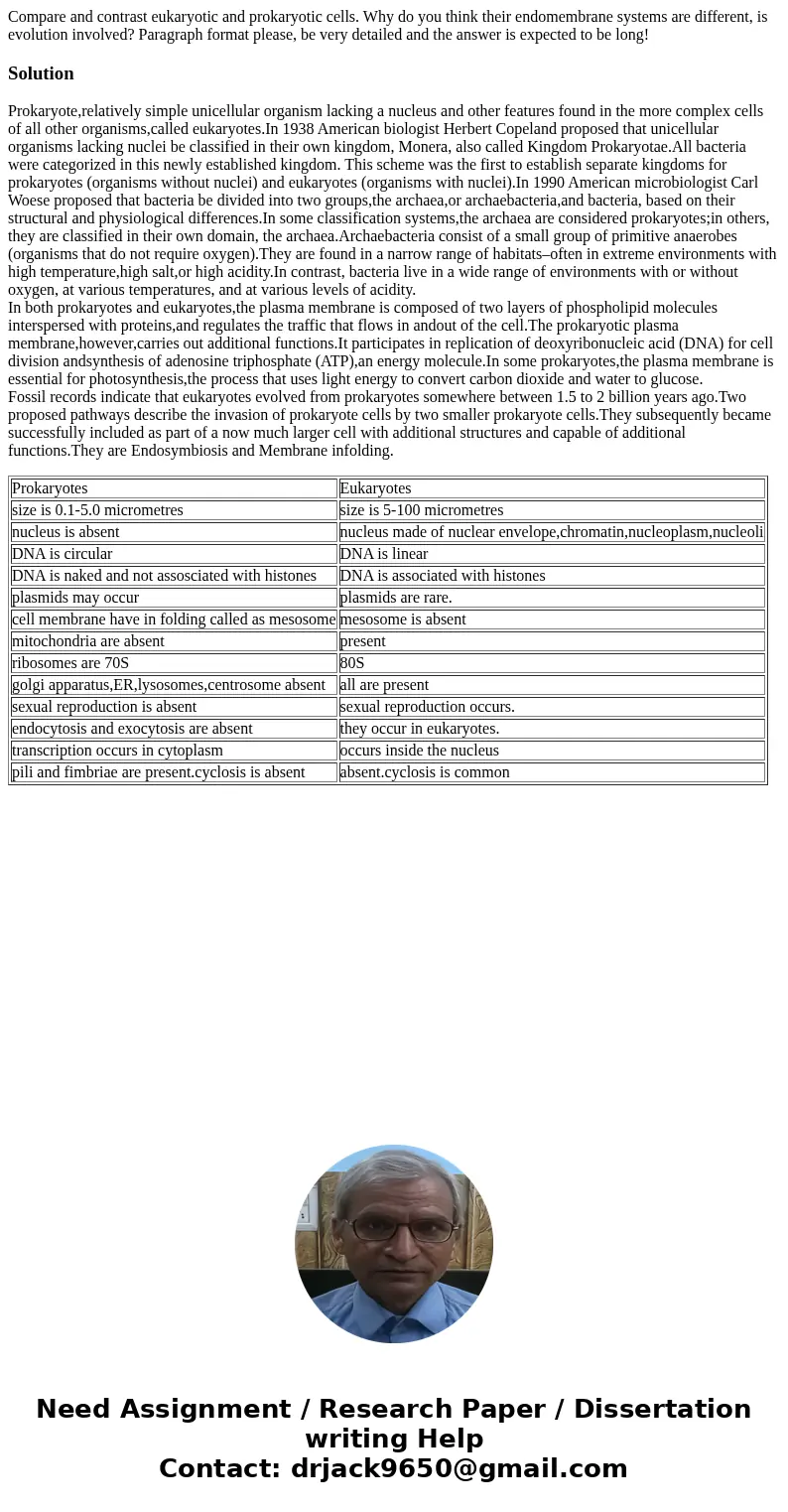Compare and contrast eukaryotic and prokaryotic cells Why do
Compare and contrast eukaryotic and prokaryotic cells. Why do you think their endomembrane systems are different, is evolution involved? Paragraph format please, be very detailed and the answer is expected to be long!
Solution
Prokaryote,relatively simple unicellular organism lacking a nucleus and other features found in the more complex cells of all other organisms,called eukaryotes.In 1938 American biologist Herbert Copeland proposed that unicellular organisms lacking nuclei be classified in their own kingdom, Monera, also called Kingdom Prokaryotae.All bacteria were categorized in this newly established kingdom. This scheme was the first to establish separate kingdoms for prokaryotes (organisms without nuclei) and eukaryotes (organisms with nuclei).In 1990 American microbiologist Carl Woese proposed that bacteria be divided into two groups,the archaea,or archaebacteria,and bacteria, based on their structural and physiological differences.In some classification systems,the archaea are considered prokaryotes;in others, they are classified in their own domain, the archaea.Archaebacteria consist of a small group of primitive anaerobes (organisms that do not require oxygen).They are found in a narrow range of habitats–often in extreme environments with high temperature,high salt,or high acidity.In contrast, bacteria live in a wide range of environments with or without oxygen, at various temperatures, and at various levels of acidity.
In both prokaryotes and eukaryotes,the plasma membrane is composed of two layers of phospholipid molecules interspersed with proteins,and regulates the traffic that flows in andout of the cell.The prokaryotic plasma membrane,however,carries out additional functions.It participates in replication of deoxyribonucleic acid (DNA) for cell division andsynthesis of adenosine triphosphate (ATP),an energy molecule.In some prokaryotes,the plasma membrane is essential for photosynthesis,the process that uses light energy to convert carbon dioxide and water to glucose.
Fossil records indicate that eukaryotes evolved from prokaryotes somewhere between 1.5 to 2 billion years ago.Two proposed pathways describe the invasion of prokaryote cells by two smaller prokaryote cells.They subsequently became successfully included as part of a now much larger cell with additional structures and capable of additional functions.They are Endosymbiosis and Membrane infolding.
| Prokaryotes | Eukaryotes |
| size is 0.1-5.0 micrometres | size is 5-100 micrometres |
| nucleus is absent | nucleus made of nuclear envelope,chromatin,nucleoplasm,nucleoli |
| DNA is circular | DNA is linear |
| DNA is naked and not assosciated with histones | DNA is associated with histones |
| plasmids may occur | plasmids are rare. |
| cell membrane have in folding called as mesosome | mesosome is absent |
| mitochondria are absent | present |
| ribosomes are 70S | 80S |
| golgi apparatus,ER,lysosomes,centrosome absent | all are present |
| sexual reproduction is absent | sexual reproduction occurs. |
| endocytosis and exocytosis are absent | they occur in eukaryotes. |
| transcription occurs in cytoplasm | occurs inside the nucleus |
| pili and fimbriae are present.cyclosis is absent | absent.cyclosis is common |

 Homework Sourse
Homework Sourse